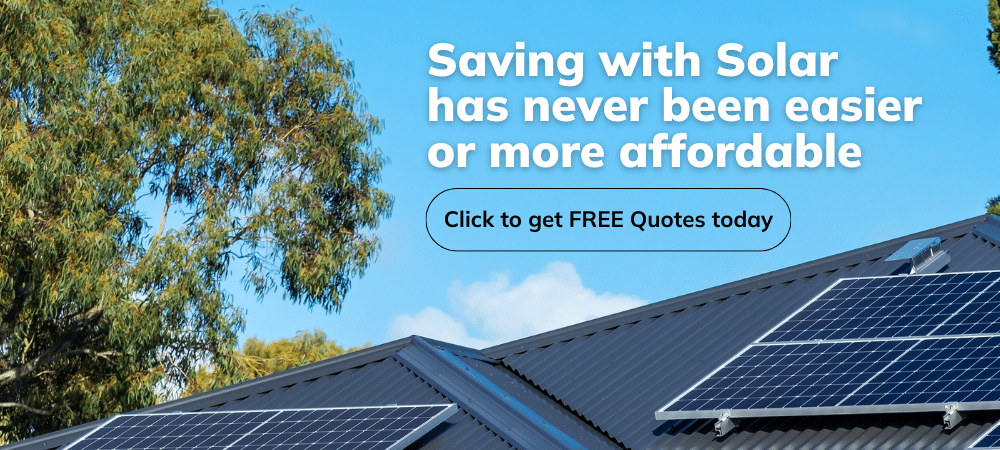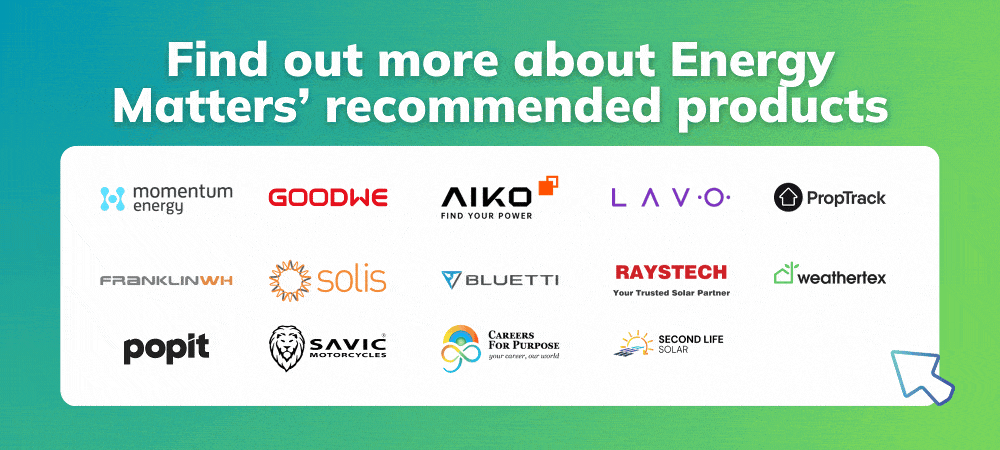Electricity costs in Australia have been rising due to factors like increased demand, supply constraints, and network costs. For households and businesses, energy-efficient appliances offer a practical way to reduce electricity use and lower power bills.
Energy-efficient appliances use advanced technology to perform the same functions as standard models but with less electricity. The Australian Government’s Energy Rating Label system helps consumers compare efficiency levels, making it easier to choose cost-effective options. By upgrading to energy-efficient appliances, households can cut power consumption, reduce greenhouse gas emissions, and take advantage of government rebates that make the switch more affordable.
On this page
How to identify and understand energy-efficient appliances
Energy efficiency refers to how effectively an appliance uses electricity to perform its function. A more efficient appliance provides the same performance while consuming less power, reducing both electricity costs and environmental impact.
Australia’s Energy Rating Label helps consumers compare the efficiency of different models. Appliances are rated on a scale from 1 to 10 stars, with more stars indicating higher efficiency. Some appliances, like refrigerators and air conditioners, have a Zoned Energy Rating Label, which provides information on performance in different climate conditions.
Did you know Energy Matters is Australia’s largest renewable news, blog and educational resource? Subscribe to Energy Matters’ weekly newsletter and keep updated even with incentives, rebates and recommended solar product offers.
Interpreting energy rating labels
- Star rating: More stars mean greater efficiency.
- Annual energy consumption (kWh/year): Shows estimated yearly electricity use, helping to compare running costs.
- Climate zone adjustments: For air conditioners, labels indicate performers in different Australian climate zones.
Standards and regulations
Australia regulates appliance efficiency through the Greenhouse and Energy Minimum Standards (GEMS), ensuring new appliances meet minimum efficiency requirements. Checking for GEMS compliance ensures that a product meets national energy-saving standards.
Understanding these ratings and regulations helps consumers make informed choices when purchasing new appliances, ensuring long-term savings and reduced electricity consumption.
Key appliances that impact electricity use
Certain household appliances consume more electricity than others, making energy efficiency a crucial factor when purchasing or upgrading them. Below are the most significant energy-consuming appliances in Australian homes and how efficiency can reduce their impact.
- Refrigerators & freezers
- Run 24/7, making them one of the highest energy users.
- Modern, energy-efficient models use inverter compressors to adjust cooling as needed, reducing power consumption.
- Look for higher star ratings and features like auto defrost to minimise energy waste.
- Washing machines & dryers
- Front-loading washing machines are generally more energy- and water-efficient than top loaders.
- Models with heat pump dryers use significantly less electricity than traditional vented dryers.
- Using cold washes can reduce energy use by up to 80%.
- Dishwashers
- Energy-efficient dishwashers use less water and lower temperatures without compromising cleaning performance.
- Choosing models with eco-mode settings helps minimise power use.
- Only running full loads further improves efficiency.
- Air conditioners & heaters
- Reverse-cycle air conditioners are more efficient than standalone heaters in winter.
- Higher Zoned Energy Rating Labels ensure better performance on climate.
- Inverter technology allows air conditioners to adjust power usage rather than running at full capacity constantly.
- Ovens & stovetops
- Induction cooktops use up to 40% less energy than traditional electric cooktops.
- Convection ovens circulate hot air for even cooking, reducing cooking and electricity use.
How energy-efficient appliances save money
Upgrading to energy-efficient appliances reduces electricity bills by lowering power consumption. While high-efficiency models may have a higher upfront cost, the long-term savings on energy bills often outweigh the initial expense.
Lower electricity bills over time
- Energy-efficient appliances consume 10-50% less electricity than standard models.
- A 5-star refrigerator can save $200-$300 over ten years compared to a 2-star model.
- A heat pump dryer can reduce running costs by up to 60% compared to a conventional dryer.
Government rebates and incentives
Australian households and businesses can access rebates and discounts when purchasing energy-efficient appliances through state and federal programs, such as:
- Victorian Energy Upgrades (VEU): Discounts on energy-saving appliances.
- NSW Energy Savings Scheme (ESS): Incentives for upgrading to efficient appliances.
- Small-scale Renewable Energy Scheme (SRES): Offers financial incentives for energy-efficient systems like solar hot water.
Upfront cost vs. long-term savings
A $1,500 energy-efficient air conditioner may cost $200 less per year to run than a $1,000 standard model. Over 10 years, the efficient model saves $2,000 in electricity costs, making it a better investment. Checking the annual energy consumption (kWh/year) on the Energy Rating Label helps estimate running costs before purchasing.
Tips for maximising energy efficiency at home
Regular maintenance is key to ensuring appliances run at peak efficiency. Cleaning refrigerator coils and checking door seals help maintain proper cooling, while defrosting freezers prevents ice buildup that forces the compressor to work harder. Air conditioners also perform better when filters are cleaned every few months to maintain airflow. These small maintenance tasks can extend the lifespan of appliances and keep energy consumption in check.
Beyond maintenance, integrating smart technology can further improve efficiency. Smart power strips reduce wasted energy by cutting off standby power to unused devices. Smart thermostats and timers help regulate heating and cooling, preventing unnecessary electricity use. Energy monitors provide real-time data on consumption, making it easier to identify and adjust high-energy habits.
Daily routines, especially with water and laundry use, also play a role in energy efficiency. Washing clothes in cold water can cut energy use by up to 80%, while air-drying clothes instead of using a dryer reduces power consumption even further. Running dishwashers and washing machines only with full loads ensures they operate efficiently, reducing both electricity and water waste.
By maintaining appliances, incorporating smart technology, and adopting energy-conscious habits, Australian households can significantly reduce their electricity bills while minimising overall power consumption.
The environmental impact of energy-efficient appliances
Switching to energy-efficient appliances not only lowers electricity bills but also reduces the environmental impact of household energy use. In Australia, where much of the electricity grid still relies on fossil fuels, cutting energy consumption helps decrease greenhouse gas emissions and overall demand for the power system.
Reducing electricity use means fewer carbon emissions from coal and gas-fired power plants, which are among the largest contributors to Australia’s carbon footprint. A household that replaces an old, inefficient fridge with a highly high-rated energy-efficient model can prevent hundreds of kilograms of CO₂ emissions per year. Similarly, using a heat pump dryer instead of a conventional one can cut emissions by more than 50%. When multiplied across millions of homes, these reductions contribute significantly to national sustainability efforts.
Lower energy demand also means less strain on the electricity grid, particularly during peak periods. During heatwaves, for example, inefficient air conditioners running at full capacity can push the grid to its limits, increasing the risk of blackouts. By choosing high-efficiency models, households help stabilise the system and reduce the need for additional power generation, often from fossil fuel sources.
Energy-efficient appliances also contribute to water conservation. Many modern dishwashers and washing machines use less water while maintaining strong performance, reducing pressure on Australia’s already scarce water resources. Combined with renewable energy adoption, these appliances play a crucial role in making households more sustainable.
By prioritising energy efficiency, Australians can reduce their carbon footprint, ease pressure on the power grid, and contribute to a more sustainable future.
How to choose the right energy-efficient appliances
Selecting energy-efficient appliances requires more than just looking for a high star rating. Understanding energy labels, long-term costs, and the right size for your household ensures maximum savings and efficiency.
Check the energy rating label
Most appliances in Australia display an Energy Rating Label to help consumers compare efficiency. When reviewing labels:
- Look at the star rating – More stars indicate lower energy consumption.
- Check the kilowatt-hour (kWh) usage per year – Two appliances with the same star rating can still have different energy consumption levels. Lower kWh usage means lower electricity costs over time.
Choose the right size
The size and capacity of an appliance impact its energy use. Selecting the right fit prevents unnecessary power consumption:
- Refrigerators – A fridge that’s too large wastes energy cooling empty space, while one that’s too small may overwork to keep food cold.
- Air conditioners – An undersized unit will struggle to maintain the right temperature and use more power, while an oversized unit will cycle on and off inefficiently.
- Dishwashers and washing machines – Ensure the capacity matches household needs. Running a half-empty dishwasher frequently wastes more energy than waiting for a full load.
Consider energy-saving technology
Some appliances use advanced technology to improve efficiency:
- Heat pump dryers – Use less electricity than traditional vented or condenser dryers.
- Inverter technology – Found in air conditioners and refrigerators, it adjusts power usage based on demand, reducing energy waste.
- Eco modes – Many dishwashers, washing machines, and air conditioners offer energy-saving modes that lower power consumption.
Check for government rebates
Australian households may be eligible for incentives when purchasing energy-efficient appliances. Some programs include:
- Victorian Energy Upgrades (VEU) – Discounts on energy-efficient products for Victorian residents.
- Small-scale Renewable Energy Scheme (SRES) – Rebates for eligible appliances that reduce electricity use.
Energy-efficient appliances offer a practical solution for reducing electricity use, lowering bills, and minimising environmental impact in Australian homes. By understanding energy ratings, choosing the right appliance size, and considering advanced technologies such as inverter systems and eco modes, consumers can make informed choices that lead to significant long-term savings.
Maintaining these appliances through regular cleaning and smart usage habits further improves efficiency, while government rebates help offset initial costs. Ultimately, investing in energy-efficient appliances cuts household expenses and contributes to a more sustainable future.













































